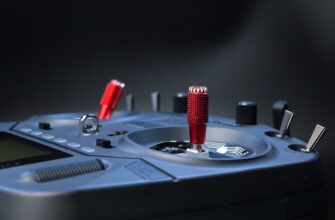🛡️ Mix USDT, Stay Untraceable
USDT Mixer helps you break blockchain trails with total anonymity. 🧩
Instant transactions, no KYC, and complete privacy — from just 0.5% fee. ⚡
The safest way to mix Tether on TRC20.
- What is a No KYC Monero Mixer?
- Why Use a KYC-Free Monero Mixer?
- How No KYC Monero Mixers Operate
- Critical Risks and Mitigation Strategies
- Top Features of Trustworthy No KYC Mixers
- Alternatives to Mixers for Monero Privacy
- Frequently Asked Questions (FAQ)
- Are no KYC Monero mixers legal?
- Can exchanges detect mixed Monero?
- How long does Monero mixing take?
- Do mixers guarantee 100% anonymity?
- What’s the minimum mix amount?
What is a No KYC Monero Mixer?
A no KYC Monero mixer (also called a tumbler) is a privacy service that breaks transaction trails on the Monero blockchain without requiring identity verification. Unlike traditional financial services that mandate Know Your Customer (KYC) checks, these mixers prioritize anonymity by:
- Accepting XMR deposits without personal documentation
- Pooling funds with other users’ transactions
- Redistributing clean coins from unrelated sources
- Charging a small fee (typically 1-5%) for the service
While Monero’s built-in privacy features (RingCT, stealth addresses) already obscure transaction details, mixers add an extra layer of obfuscation against advanced blockchain analysis.
Why Use a KYC-Free Monero Mixer?
Demand for no-KYC solutions stems from growing surveillance threats:
- Financial Privacy Protection: Prevents third parties from mapping your transaction history or wealth
- Censorship Resistance: Avoids discriminatory banking practices based on transaction patterns
- Security Enhancement: Thwarts targeted hacking by obscuring wallet balances
- Commercial Confidentiality: Shields business transactions from competitors
Unlike Bitcoin mixers, Monero mixers leverage the coin’s inherent privacy features, making the mixing process exponentially more effective at severing digital footprints.
How No KYC Monero Mixers Operate
The mixing process follows four key phases:
- Deposit: User sends XMR to the mixer’s temporary address
- Pooling: Coins are combined with other users’ funds in large liquidity pools
- Obfuscation: Algorithms redistribute funds through randomized transactions and time delays
- Withdrawal: Clean coins are sent to your destination wallet from unrelated sources
Advanced mixers implement ‘churning’ – sending coins through multiple mixer rounds – and randomized fee structures to further complicate chain analysis.
Critical Risks and Mitigation Strategies
While powerful, no-KYC mixers carry inherent risks:
- Exit Scams: Operators disappearing with user funds. Mitigation: Use services with multi-year reputations
- Timing Analysis: Correlation of deposit/withdrawal times. Mitigation: Choose mixers with variable delays (hours to days)
- Legal Gray Zones: Regulatory scrutiny in some jurisdictions. Mitigation: Research local laws before use
- Phishing Sites: Fake mixer clones. Mitigation: Bookmark official URLs from trusted forums
Always test with small amounts first and never reuse deposit addresses.
Top Features of Trustworthy No KYC Mixers
Evaluate services using these criteria:
- Zero-Log Policy: Audited systems that purge transaction data immediately
- Tor/Onion Support: Native integration with anonymity networks
- Variable Fees: Option to pay higher fees for priority mixing
- Decentralized Infrastructure: Services using p2p architectures reduce single points of failure
- Transparent Code: Open-source mixers allow community verification
Alternatives to Mixers for Monero Privacy
Consider these complementary privacy techniques:
- Built-in Monero Features: Utilize Ring Signatures (10+ decoy outputs) and Stealth Addresses by default
- Atomic Swaps: Cross-chain exchanges via decentralized protocols like COMIT
- Hardware Wallets: Air-gapped devices like Ledger or Trezor for cold storage
- LocalMonero: P2P trading with cash or non-KYC payment methods
Frequently Asked Questions (FAQ)
Are no KYC Monero mixers legal?
Legality varies by jurisdiction. While privacy tools aren’t inherently illegal, using them for money laundering or illicit activities violates laws globally. Consult local regulations before use.
Can exchanges detect mixed Monero?
Properly mixed XMR is virtually indistinguishable from unmixed coins due to Monero’s default privacy features. However, some exchanges may flag deposits directly from known mixer addresses.
How long does Monero mixing take?
Processing times range from 2 hours to 72+ hours depending on the mixer’s security settings. Longer delays enhance privacy by decoupling transaction timing.
Do mixers guarantee 100% anonymity?
No system provides absolute anonymity. Mixers significantly enhance privacy but risks exist from operational errors, advanced heuristics, or user mistakes like address reuse.
What’s the minimum mix amount?
Most services require 0.5-2 XMR minimum to maintain pool liquidity and deter chain analysis through micro-transactions.
No KYC Monero mixers represent the frontier of financial privacy technology. When used responsibly, they empower individuals to reclaim sovereignty over their transaction data in an increasingly surveilled digital economy. Always prioritize security research and start with small test transactions when exploring new privacy solutions.
🛡️ Mix USDT, Stay Untraceable
USDT Mixer helps you break blockchain trails with total anonymity. 🧩
Instant transactions, no KYC, and complete privacy — from just 0.5% fee. ⚡
The safest way to mix Tether on TRC20.








